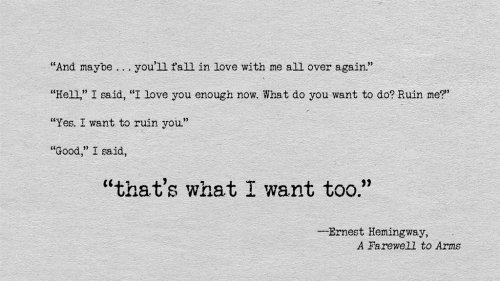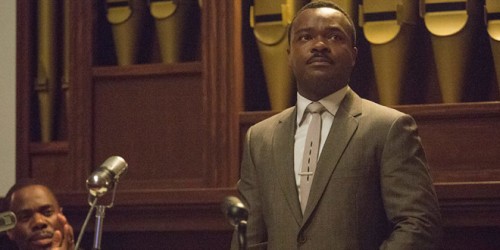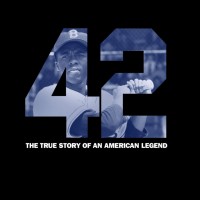Presenting an evaluation of a piece of entertainment is not an exact science, but some traditional guidelines have formed for good reasons not least of which the rating scores. Many things need to be addressed in order to give the reader a complete picture on what the prose novel, graphic novel, film, or video game entails. But generally the most demanded part and biggest takeaway from a review is the overall rating. It never takes the place of a full review but rather a conclusion. It’s been said that in an essay like a review the structure normally goes a) tell them what you’re going to tell them, b) tell them what you want to, and c) tell them what you told them. It’s a funny way of saying to introduce and end your argument in a way that summarizes it. The rating is the concluding summary, and it’s important to communicate it consistently and effectively through all of your reviews. I personally call it
The Verdict
But first here some ways NOT to do it
My biggest pet peeve in reviews is the non-sensical rating system that some reviewers use.
The 10 Point System
In a 10 point review system, a 5 is a terrible movie and typically the first 5 points rarely get used. Anything below 6 is merely to evaluate how awful the movie is. That’s partly because users think it equivalent to school grades where below 60% is “F” for failure. A 1-10 score rarely mean the same things to the same people. The scale is too large.
Additionally, systems with precise scores that include decimal points only serve to compare individual media, and over time reviewers are likely to accidentally rate a better piece .1 or .2 less in value than a slightly inferior piece of work. Fractions in scores are difficult to keep track of, and no reader needs to know your score that precisely to understand what you think about it.
Letter Grade System
Letter systems do not translate, and if you were/are an overachiever where a B+ in school is beyond horrible, you understand why. Lettered grades do not mean the same thing to everyone. Typically in school, an “A” is earned if you did everything correctly. Only in weighted university courses does an “A” actually show how much better than others you are, and even when you do earn one, you aren’t necessarily perfect. And media is seldom perfect.
4 Star System
Most people confuse a 4 star system for a 5 star system and there is not enough room for critical evaluation. Like the “thumbs up” system, there’s not enough room to accurately represent the media. It sort of faces the opposite problem as the 1-10 system. Is a 3 star movie great but not perfect or only just above okay? It just does not flow.
This brings me to the system that should be used:
5-star system with half star options
(It doesn’t have to be stars)
In order to give readers of this article good examples, I only present pieces of art where acclaim is largely consistent i.e. not controversial. Also, pay attention to the words I use next to each star rating. Using them in your review is tantamount to scoring them with the corresponding number.
5 stars – Masterpiece–
This is the highest echelon of praise and nothing but the best should be awarded such an honor. Every 5 star awarded movie belongs in the best picture conversation for its entertainment value and elevated level of presentation executed with the utmost precision. Every element involved from music to character complexity to special effects must be heavily scrutinized before being credited as 5 out of 5. If a reviewer gives away 5 star ratings to undeserving art pieces, their opinion will not only be dismissed, but the greatest works will not stand out as such. However, if never used, the reviewer’s opinion will be just as scoffed at. For movies specifically, there is typically only one and sometimes two 5 star worthy film(s) a year.

Well known examples of 5 star works throughout media: To Kill a Mockingbird (prose), Kingdom Come (graphic), Schindler’s List (film), Princess Monoke (animated), and The Last of Us (video game).
4.5 stars –Exemplary–
4 stars –Outstanding–
A piece awarded a 4 out of 5 rating has everything that can be reasonably expected of a particular work, but comes with a flaw or two. This work executes its intentions well and leaves the viewer, gamer, or reader with an undoubtedly positive impression. It is a worthy ambassador for its genre, but not the best. A movie with 4 out of 5 may still be nominated for Best Picture and may win if there is no better competition. There are evident problems that do not overshadow the greatness of the work, but such issues must be expressed in any descent review.
Well known examples of 4 star works throughout media: Animal Farm (prose), Identity Crisis (graphic), Little Miss Sunshine (film), How to Train Your Dragon (animation), Diablo (video game).
3.5 stars –Great–
3 stars –Good–
Any work awarded 3 out of 5 is good, but still leaves much to be desired. There are a considerable number of gripes concerning the piece in question that weight it down. The disclaimer “overall” must be added when talking about the positive nature of its quality. It is still worth watching, reading, or playing, though perhaps not always for the money it costs depending on the interests of the consumer. This rating may bring down a highly anticipated work without insulting it. To less hyped piece, a 3 star rating may deem it a pleasantly good surprise without overstating how good it is.
Well known examples of 3 star works throughout media: A Farewell to Arms (prose), Persepolis (graphic), Moulin Rouge (film), Titan A.E. (animation), Dynasty Warriors (video game).
2.5 stars – Mediocre–
2 stars –Inferior–
When a work is 2 out of 5, the problems outweigh what it does right. However, it is not a complete waste. It has some redeeming value, but the overall impression is of something second-rate. Such a project is not a good representation of the genre and may depend on clichés, gimmicks, or niche desires without artistic value. The majority of works should be valued at 2, 2.5, and 3 where 3 rates as somewhat positive and a 2 rating is somewhat negative. Designating something widely liked as a 2 may make readers question the reviewer’s judgment, fair or not.
Well Known examples of 2 star works throughout media: The Giver (prose), Transformers 2: Revenge of the Fallen (film), Shrek the Third (Animation), Batman Forever –Sega Genesis (video game)
1.5 stars –Bad–
1 Star –Awful–
These are the pieces everyone hates, and they get uniform revilement from the community. Media this far gone very rarely gets the “so bad it’s good” label attached. It is difficult to sit through an entire viewing, but such a task can at least be done. Though they’re not, they are often considered to be the worst such-and-such of all time. Production value may be there or not. If it is, then it is not executed well. They can also damage a franchise, and the ones below this rating definitely do. Going below 1 star is not done on many platforms since anything at or below this rating is insulting.
There are not many well-known examples except for films and video games as these pieces often fade into obscurity. Modern parody movies fall here most of the time. I have personally seen stoners walk out of the theater during Meet the Spartans (film) calling it stupid. I have not played it, but E.T. (video game) also has such a reputation.
0.5 stars –Abomination–
Example: The Last Airbender (film).
0.0 Stars –Worthless–
The actual worst of the worst. There is zero redeeming value, and it is physically painful to watch. You have not heard of them, and it’s remarkable when they ever get off the ground as a project.
Concluding Thoughts:
Don’t reference Rotten Tomatoes (and others) when giving reviews. Your opinion should not be influenced by what others think. Do not compare. There is no winning if you refer to them. Either you’re a copy-cat or “wrong.” Only reference Rotten Tomatoes when writing articles other than reviews. You must build trust with your audience. Do not reference IMDB. It has no worth.
A number is finite, so take your time until you know how to rank it. Reading your own words may help you make up your mind in that case.





































